It can be easy to forget what a precious commodity water is when it’s readily available at the touch of a button, twist of a faucet and, well, literally on tap anywhere you go.
However, the recent drought in Cape Town has served as a timely reminder that we shouldn’t take it for granted. At one point, it seemed like Capetonians wouldn’t make it through this past summer without water imports. In the end, they just barely made it thanks to rather extreme rationing measures. The drought isn’t over yet, but winter rains have bought the city another year to prevent a Day Zero scenario.
In South Africa and other countries regularly affected by water shortages, H2O is finally being treated as the valuable element (or rather compound, if we’re getting technical) it is. Water-wise gardening is only one part of a water-conscious lifestyle, but one can also boost biodiversity, make a positive contribution to an eco-friendly lifestyle, help slow climate change and prevent soil erosion.
Learn From Ancient Societies
Indoor plumbing is a relatively recent invention, so it pays to look at how people lived in hot climates at times when water was harder to come by. Mediterranean gardening is inspired by ancient gardens across the Mediterranean region and can inspire landscape designs in other hot, dry climates. Marilyn Medina Ribeiro, garden designer and director of Waterwise Gardens in Portugal explains the benefits:
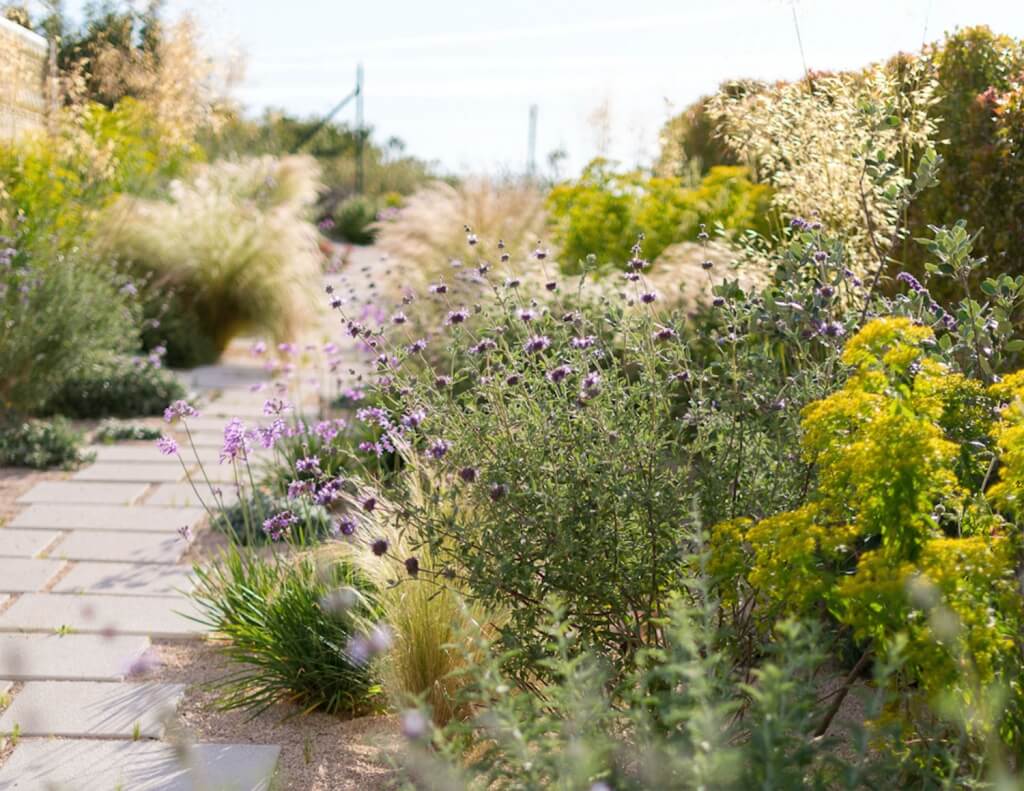
[Photo courtesy of Waterwise Gardens]
“Traditional gardens and land management in the Mediterranean can inform a healthy garden in similar climates. Plants should be grouped together for similar water needs: those with high water requirements, such as vegetables and flowers, can be gathered in small areas close to the house for ease and efficiency of watering, while larger areas of low-water, low-maintenance plants fill the scene further out from the house.
“The use of paving is a recurring theme from ancient to modern – paved areas of course need zero irrigation, but also highlight the plants, keep things looking tidy and provide comfortable access from one area to another. Stones or gravel protect the roots of surrounding plants from the worst of the heat.
“Watering has traditionally been infrequent but abundant when applied, to minimise losses and encourage roots to establish deep down. Basins or channels are created in the earth around trees and crops, and these would be flooded once a week or once a fortnight to thoroughly soak the soil. Rainwater cisterns or open tanks are typical features of older gardens and farms, and the water gathered over the winter would be carefully meted out over the hotter months.
“Gardens planned specifically for the local climate bring a series of benefits. Visually they chime with their surroundings; they change dramatically and beautifully with the seasons. The plants will thrive rather than simply survive, and they will do so without the ‘life support system’ of constant irrigation, fertilisation and pest control – overall maintenance will be significantly lower. Particularly in the summer, when an irrigated garden provides constant material for weeding and pest-fighting, the summer-dry garden slips into a golden siesta, allowing us to sit back and simply enjoy it.
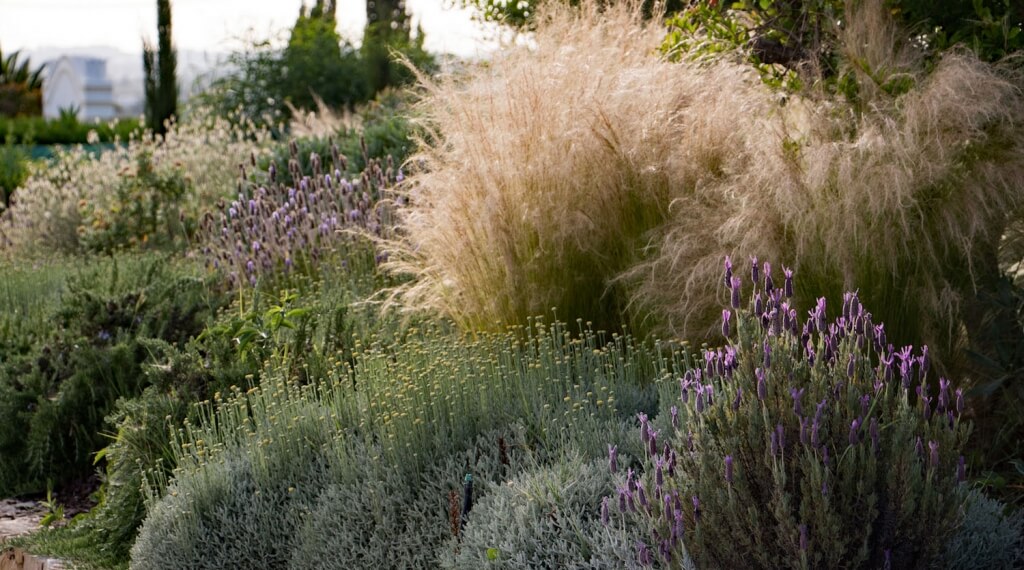
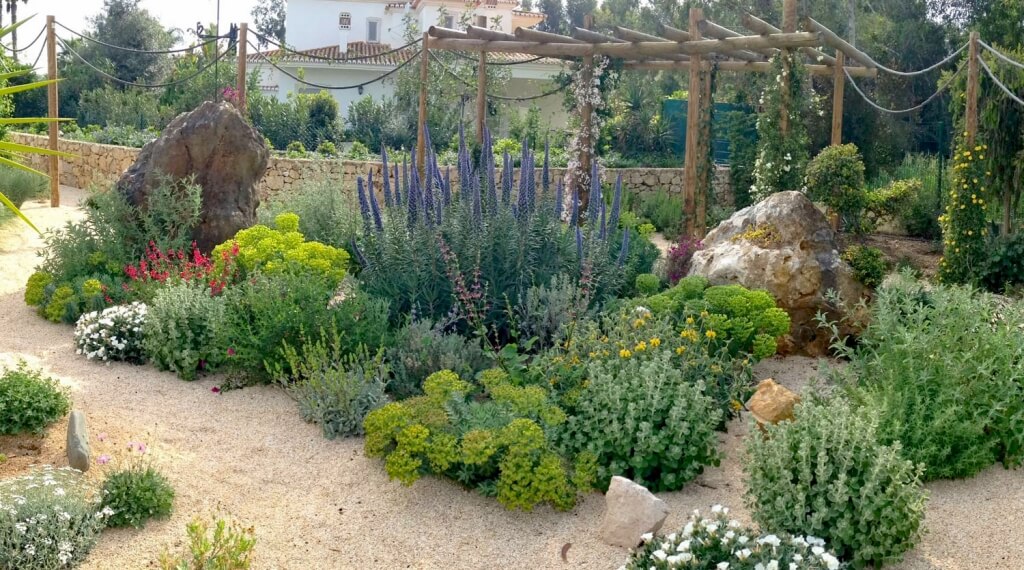
[Photos courtesy of Waterwise Gardens]
“The philosophy can be summed up very simply: work with nature, not against her, and you will make your life easier and more pleasurable in every respect.”
Choose Indigenous Plants
Biodiversity is threatened by climate change, but increased biodiversity can reduce the impact of that change – and choosing local species for our gardens is one way we humans can help. It also just makes sense, as indigenous plants have evolved over millions of years to adapt to the given conditions, including soil, seasonal temperatures and rainfall.
At the height of the recent water restrictions, lawns across Cape Town turned brown, and all but the hardiest indigenous plants suffered in the heat. Luckily, Southern Africa boasts a range of plants perfectly suited to the challenging climate; Cape Town itself is located within the Cape Floral Region, the most diverse plant kingdom on the globe. World-famous Kirstenbosch National Botanical Garden, on the slopes slopes of Table Mountain, is devoted almost exclusively to the country’s indigenous flora and can provide inspiration for Capetonians looking to plan a drought-resistant garden in time for next summer.
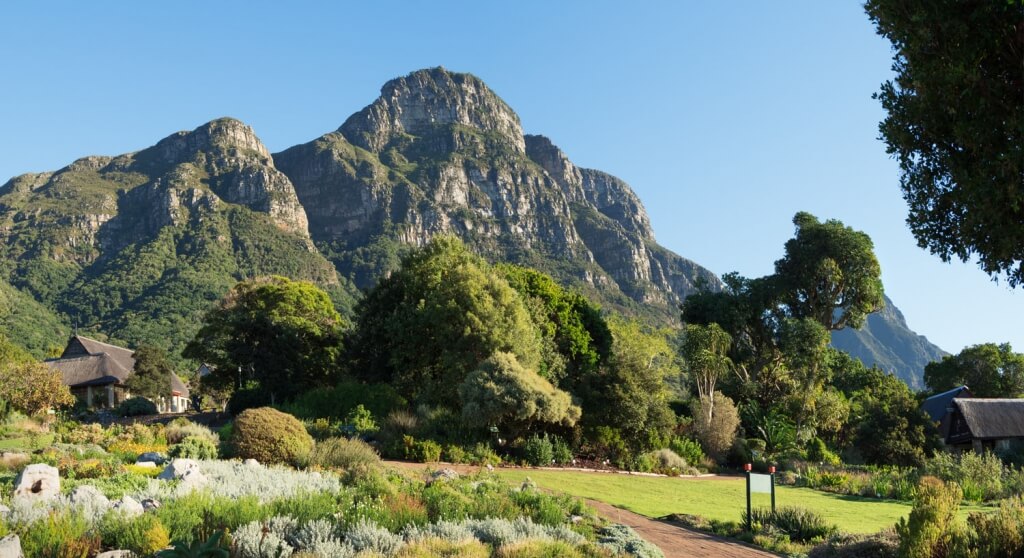
Cape Town water-wise gardening expert Marijke Honig has written Plant Palettes, a book on how to create a dream indigenous garden. The author has some ideas on making local species work for you:
“When selecting plants for your garden, it helps to choose plants from your rainfall region – this means there’s a good chance they can survive on natural rainfall, once they are well established. Also look at the natural distribution of a plant species: widespread species can generally tolerate a range of conditions, while narrow endemics have more specialised requirements. In my experience, plants from the coastal Strandveld and Eastern Cape tend to be most resilient: they are tough survivors and adaptable to change. For example, evergreen shrubs such as Searsia Crenata make excellent long-lived garden subjects.
“Succulents are another great option, requiring very little water and coping well with extended dry periods. Visit a local botanical garden or garden centre to find out which plants native to your region are suited to a water-wise garden. In general, plants that can be found thriving in places without any irrigation are a good choice. If those aloe plants can survive on the side of the motorway, they can probably pull through a hot summer in your garden.”
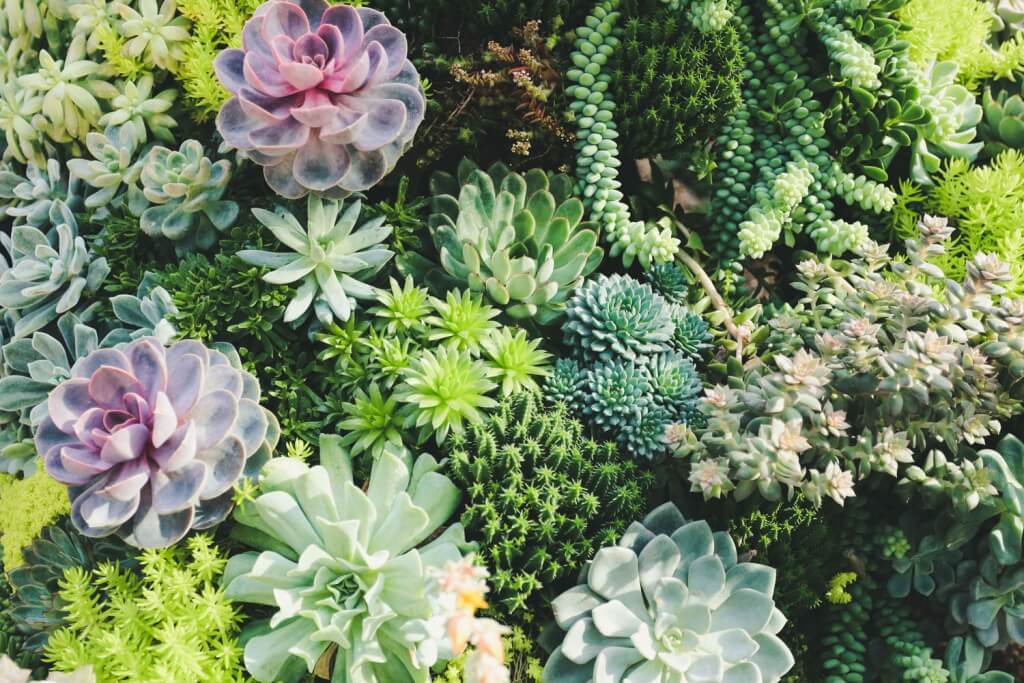
Create A Cool Urban Oasis
In times of water rationing, gardens are often the first thing to go. Obviously, watering your garden is low on the list of priorities when drinking water is scarce, but Dr. Sharron Pfueller, Vice-President of Sustainable Gardening Australia, has some convincing arguments in support of sustainable gardens, especially in the city – if they’re well-planned:
“Urban gardens help restore contact with the natural world and, as well as appealing to all our senses and enhancing our physical and psychological well-being. They remove air pollutants, calm our nerves and provide opportunities to grow fresh, healthy, pesticide-free and unpackaged food. Gardens cool dwellings through shade and evaporation of moisture transpired by plants, thereby reducing the use of fossil fuel for air-conditioning. Roof or vertical gardens also add a layer of building insulation. Garden surfaces are useful for water conservation, because they absorb water and use it for beneficial plant growth, rather than run-off from hard, paved surfaces.
“In decorative gardens, less water is required by plants suited to local soil, climate and rainfall. Indigenous plants have the added benefit of being most suitable as habitat for fauna, including beneficial insects which prey on pests, reducing the need for harmful pesticides.
“To minimise water use, especially when growing fruit and vegetables, place a layer of mulch over the soil. This reduces moisture loss through evaporation. If rainfall is insufficient, drip irrigation systems with flow-controlled valves laid under the mulch will provide the right amount of water.
“Watering is best done early in the morning, when plants take it up readily and evaporation is low. Grey water that is relatively clean (ie. from washing machines, sinks and baths) can be used for trees and shrubs.
“In very small gardens or on balconies, these techniques can be applied to well-insulated pots. The most water-saving ‘pot’ is a wicking bed which has a reservoir at its base allowing moisture to migrate by capillary action up to plant roots.”
Start From The Ground Up
Sustainable gardening begins with the soil. However, the soil isn’t just there to support your plants – the same is true vice versa. Not only does vegetation prevent soil erosion, it improves the soil’s ability to store water and also helps bind carbon dioxide in the ground, hence reducing the amount of greenhouse gases released into the atmosphere.
California’s Healthy Soils Initiative is working to promote the development of healthy soils on farms and ranches. The California Native Plant Society, a non-profit dedicated to conserving native plants and their natural habitats, has some tips for the home gardener:
“By choosing the right vegetation for the conditions, you can ensure that your plants put down roots successfully and thrive with minimal intervention (ie. as little water and fertiliser as possible). Any vegetation is better than no vegetation to prevent soil erosion, but certain groundcovers, as well as deep-rooted perennials, are particularly beneficial.
You may be able to find a soil map for your area, usually provided by environmental agencies or universities. You can also send samples away to be tested at a lab, giving you a helpful breakdown of pH levels and nutrients. Start with a site analysis, which is a fancy way of saying, ‘Get your hands dirty!’ Dig up different parts of your garden and take notes on soil type, water flow and drainage, sunlight and wind exposure, as well as orientation (north or south). Take one or several samples, depending on how uniform soil is across the garden.
A soil drainage test, which involves filling a 30-centimetre hole with water and observing how quickly water drains out of it, will tell you whether you can use plants that like wet or dry roots. It also helps to draw up a list of all plants that are currently doing well in certain locations. If you didn’t plant them (and even if they are only weeds), find out their names and which soil conditions they favour, then choose similar plants for the same spot. If you are worried about contaminated soil due to fertilisation or pesticides, plant soil-restorative species. Otherwise, let the results of your site and soil analysis guide your plant selection.”

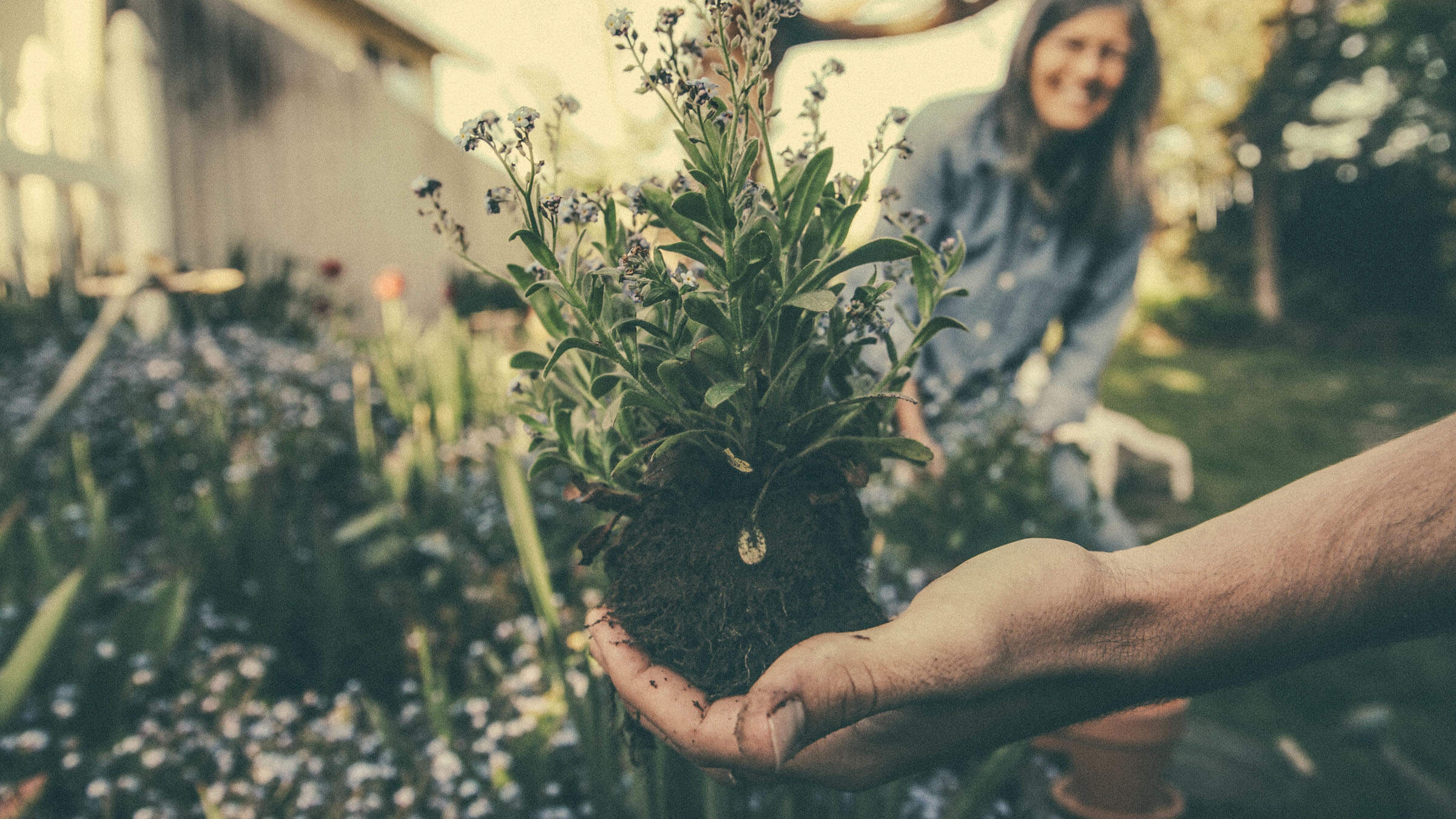












Sorry, the comment form is closed at this time.